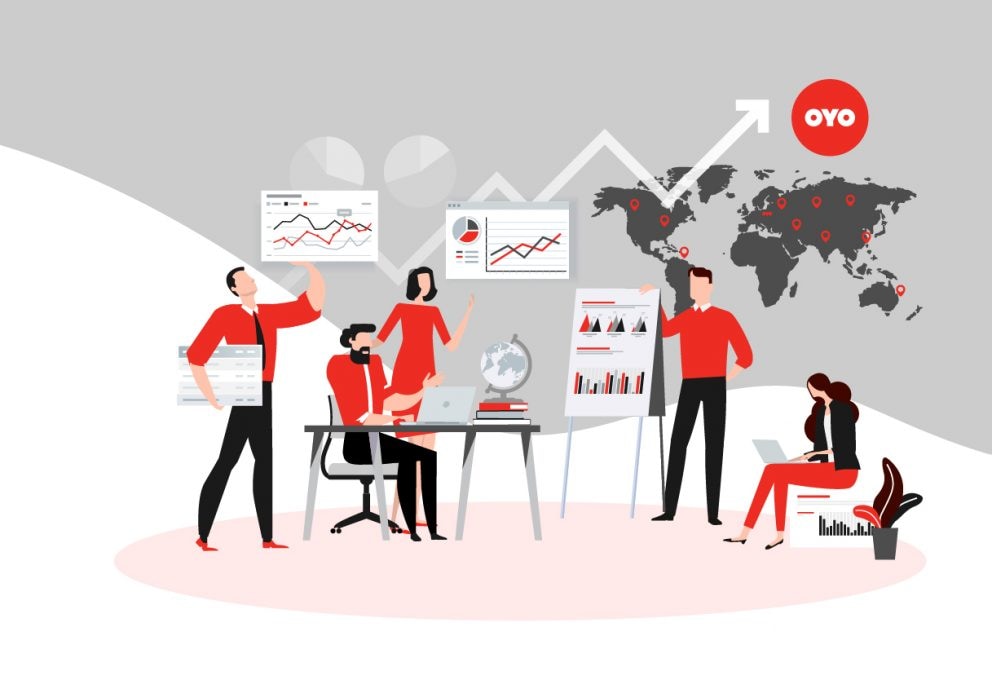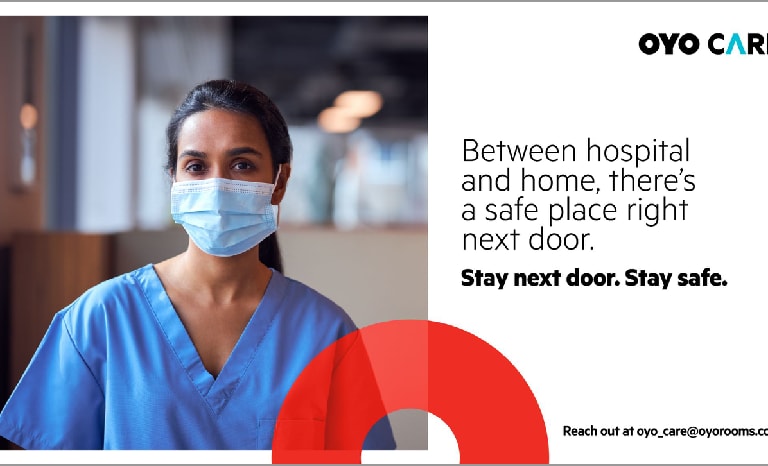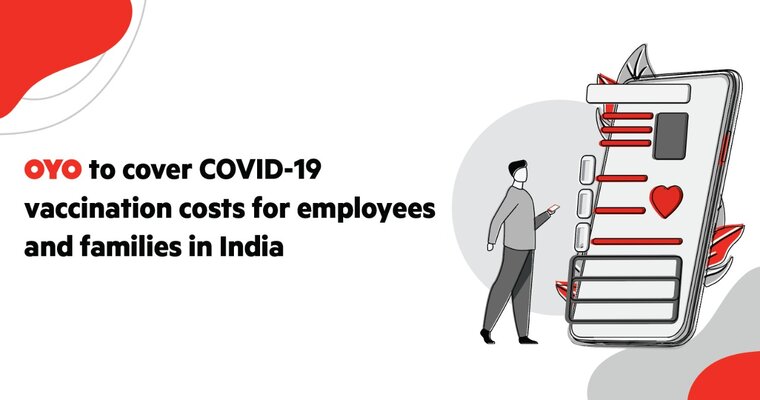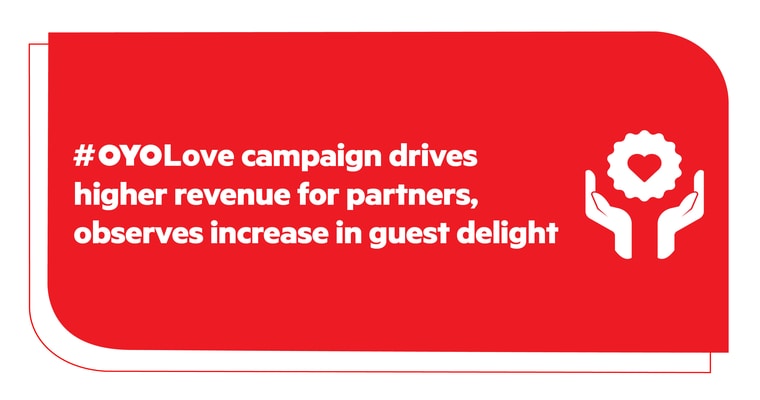The fast-paced millennials of today prefer booking a hotel room to host a party or to enjoy a match screening with friends, rather than inviting the associated hassles at home. While ‘Atithi Devo Bhava’ still remains ingrained in our DNA; with changing times, the millennials have rehashed the age-old concept and created their own version of it. The change in this outlook is led by higher disposable incomes and better transport options emerging in the country. This behavioural change is exhibited strongly by millennials who are not only exploring Wayanad or Hampi over Goa but are also looking out for intra-city stay options for use cases.
The soaring domestic demand
Historically, India has been a market, where the hospitality segment has been highly fragmented with the presence of a handful of luxury brands. There has been a dearth of branded hotel chains catering to mass segments, where consumers travel at less than INR 3000 per night. Both the market and need of guests exhibited this dire need. The breadth and depth of the need of such a product are well exhibited for e.g. by the number of pilgrim towns (150+) India has, which are mostly in obscure locations, leaving aside the typical business and tourism destinations. This implies that India needed a chain to create value in more than 350-400 cities, apart from just the typical state capitals and SMART cities.
Talking about people, India has moved from a per-household annual travel of 10-15 trips to 40-50. Working parents used to make 4-6 trips per annum per person for work and the family used to indulge in 2-3 leisure trips. Of these trips, 1-2 were visiting relatives at their homes. In fact, people finalised the vacation destination depending on where they had relatives.
Apart from such local use cases, business travel has fundamentally increased with organizations not only sending representatives to typical business cities but also trying to penetrate Tier 2/3/4 cities and hence creating a need for predictable experience in smaller business towns.
An outcome of the above is that the domestic travel market of the country started growing faster since 2013 and has now crossed the inflection point of the surge and is expected to grow 2.5X from today in coming 5 years.
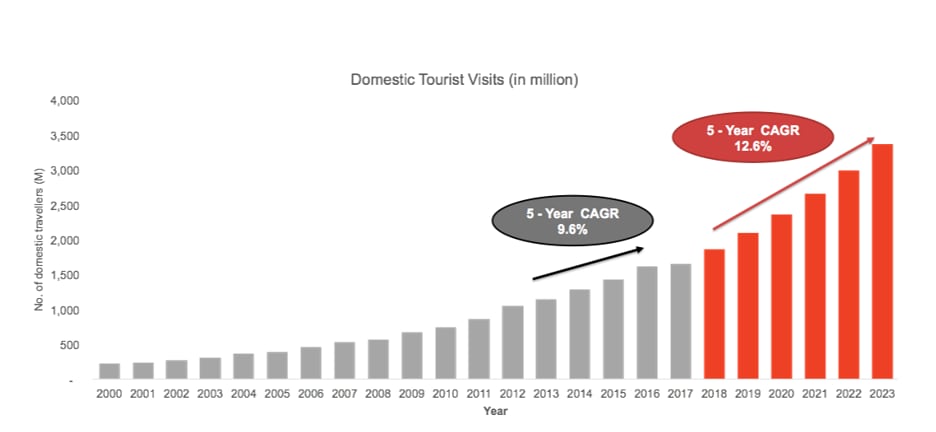
Now that we have established that the domestic tourist market is on its mark and all set to shoot at a skyrocketing speed, the associated industries like real estate will need to pace up to cater to this swell in demand. However, limited by heavy CAPEX needs and lack of skills to manage profitable operations, the real estate graph will ascend slowly and this slow growth will make it difficult for supply to match-up with demand projections. This demand and supply gap will further cause supply crunch across micro markets of the country starting from the high business hubs and transit markets.
The brighter side to this is–
- Real estate catering to this demand currently is the gold of future
- New supply will open up for this demand seeking a profitable business option
The obvious sources of supply are Residential Apartments or Complexes and Commercial spaces. Talking about the residential supply in our country, it is predominantly investor driven with a huge overhang of capacity. With policies like RERA, more projects will be pushed to completion, leading to a further oversupply of residential apartments. For an investor-backed inventory, the only way, apart from leasing to end consumer to generate returns, is to consider a business model like OYO Home, where OYO manages the operations to run the show. Yes, this would mean that the Resident Association and the ecosystem have to open up welcoming such an opportunity, where technology will solve for the security concerns via guest verifications, but the economics will push the ecosystem to make this happen.
Commercial real estate is also going through a similar phase, where the investors/individuals blocked money hoping for good returns from retail or the corporate demand. But the reality is that none of the two can consume the existing supply at scale barring the main corporate hubs. To validate my statement, let’s take the example of Gurgaon, one of the top cosmopolitan business hubs in the country. Not even half of the malls or corporate hubs in the city are successful, the rest of them typically have a crowd puller anchor store on the ground floor and a food/entertainment hub at the top floor. All other floors typically end up getting filled with establishments, which are not high ROI generators for the investors, as they are not able to pull a lot of demand for their products.
What has been the opportunity in the unbranded space?
There are 3 steps to the journey that any fragmented unbranded space goes through. Priorities and offerings of the firms solving for these problems hence change with the phase of the journey.
Discovery – this aspect involves providing the consumer with the satisfaction that she is scanning the entire gamut of options available. E-commerce to food tech, all started by solving the discovery problem by aggregating the available supply and listing them online. In hospitality, this was solved by domestic and international OTAs which made the unbranded hotels discoverable to the world.
Delivery – it is about the final ‘consumer experience’ – The next phase to generate value for the consumers is by owning the delivery of service. This is very well exhibited by Uber, Swiggy and Amazon (fulfilled by Amazon). This has been the big white space in the unbranded hotel segment where no one owned the consumer experience.
Delight – this is about creating delight for consumers by doing more than what it’s required. Once the delivery of the product has been standardized and is predictable, building trust in the brand at scale, the natural next transition happens with delight. This is where the 4 and 5 stars try and create differentiation by customizing guest experience via the choice of flowers, pillows or fruits for eg.
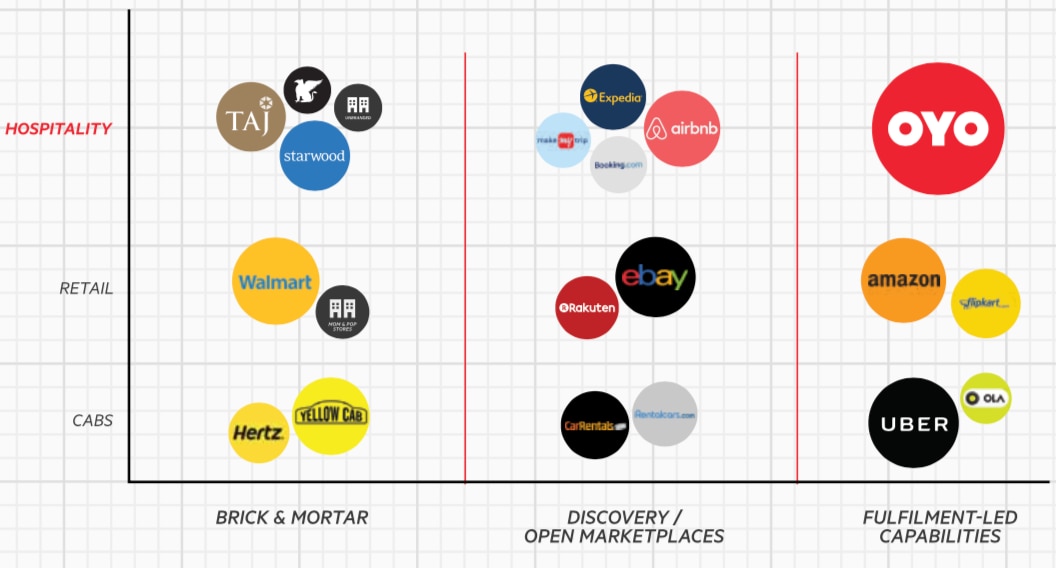
Delivery in the unbranded hotel operations comes with its own challenged which can only be improved if we work with the asset owner and solve for their problems. Considering the product is 100 sq.ft physical rooms where the guests stay for 2-24 hours in a day, it becomes extremely crucial to solve the operational roadblocks to enabling the hotel to deliver an outstanding experience. Following are the challenges hence an asset owner faces in ensuring the same
- Poor optimization of revenue via multiple channels leading to a loss in opportunity
- Unskilled operations delivering an unpredictable experience
- Non-optimal operational costs and hence variable P&L
- Non-standardized infrastructure
Considering the demand-supply gap which is expected over a period of time, it becomes vividly apparent that the other important stakeholder in the overall scheme of things is the hotel operator/owner. With the business being offline and a product being a 100+ sq ft. room in a hospitality business, asset owner as a stakeholder- who co-owns the delivery, is important and so are his problems. Hence building this brick by brick, relation by relation and property by the property is the key.
How is OYO generating value at scale for asset owner?
To help solve the above, OYO, over the last 4 years has built the following core capabilities to support and add value to the asset owner’s business or generate value from a leased asset
1. Unparalleled sustainable revenue management
Rooms are a perishable commodity in an ever-competitive market. It is just like an aircraft seat, if unoccupied, it is a business opportunity lost. OYO has built a robust revenue optimization mechanism at a property level. OYO looks at maximizing the revenue per day from a room and not the pricing. The key pillars of OYOs success are:
– Best in the class app and international + domestic OTA management
– Technology-driven marketing converting 20M+ notifications reaching out to a consumer base of 4 Cr+
– AI-powered marketing recommendation engine for customized consumer communication
– Dynamic pricing running 35M+ iterations monitoring historical and current trends to identify optimum sales prices
All of the above combined together generates the network effect, with economies of scale, creating differentiated business optimization for an asset owner who otherwise in limited capacity cannot generate the same.
2. Creating beautiful living spaces
With the mission of creating beautiful spaces, OYO has developed the capability to build and upgrade any real estate including a piece of land to a 300-year-old palace. With multiple hotels underway on land to a transformation of a non-operational asset shut for the last 80 years, following are the highlights on how we do it –
– 1000+ civil engineers with an expert team of PMCs, designers, architects and stylists
– 1000+ SKUs procured locally and internationally at rates 25-30% cheaper than the market
– Best in class inventory and vendor management systems for smooth operations
Our asset owners enjoy the benefits of economies of scale from OYO’s chain and also utilize civil engineering and design expertise. These otherwise were never available to the asset owners.
3. Tech-enabled efficient hotel operations
OYO’s current chain includes 450,000 franchised and leased rooms as a part of its chain and being one of the largest hotel chains, OYO has built the following –
– Staff recruitment across 75+ Hotel management institutes and 25+ OYO Skill Institutes, with a mix of digital and on-the-job training. Staffing science with cost-effective measures for consumable usage becomes the focus henceforth.
– 500+ Captains on the field in India who are trained in inventory and pricing management, quality audits, repair and maintenance and daily P&L management
– An integrated platform for cashless online procurement of all consumables linked with OYO procurement system for best pricing. The asset owners can also link their local vendors to optimize local purchases.
– Customer escalation and review management system handling to manage 200K check-ins a day and counting
– Innovations around reduced electricity consumption and consumable
– Best in class hotel management system, which is a unified platform run using a tablet replacing 3 different software/none currently deployed in budget hotels, so no need for a channel manager, a separate reservation system and independent accounting software. The HMS built by a hotel company covers a lot of operational nitty-gritty’s, which were always overlooked by traditional software firms.
From guests being able to order food from the app, which gets notified in the kitchen tablet to linking the housekeeping incentives with the guest feedback for that particular room check-in, OYO OS revamps the traditional operational regime generating high operational efficiencies and great guest experience.
With the above interventions, OYO can reduce the operating expenses by >30% for our asset owners and guide them to deliver an outstanding guest experience.
4. Time Value for Money
With the majority of the real estate owned by investors who do not run operations, the market is fundamentally fragmented and leased. With no right MRP for the product and asymmetry of information on how much demand to expect on a particular day/month/year, there is a tendency to lease the properties at a higher rate.
Once leased at a higher rate, hotel operations feel the pressure hence to optimally run and generate profits. Apart from managing the costs efficiently, below are the key costs of consumer acquisition the asset owner goes through managing > 10 channels. With OYO, as the Asset manager, and the overall business manager, the hassle of managing demand saves significant bandwidth for the asset owner.
With OYO saving time and hassles, businesses seek OYO as an asset owner with whom they can expand to multiple properties or focus on their primary business.
For owners of the real estate, who are typically looking for long term leases, OYO’s self-operated model, which are signed on long term leases also solves for
– Dealing with unprofessional leases
– Inconsistent payments
– Unmaintained property
– Time in managing the above away from the primary business.
The Ethos of OYO’s proposition hence are as follows –
- Double Your Business
- Top Quality Property Makeover
- Hassle-free operations
- Complete Transparency
- Financial Services
OYO is solving problems in an industry, where demand, over the coming years will continue to see a huge surge, both organically and via new use cases. The sustainable success would lie on how one can capture as much as possible and sustain by creating continuous value propositions for the asset owner.
The future of a distribution network of real estate offers exponential terminal value
In a country where Consumption (C) in economic terms is >90% offline across industries, to create the outreach to mass for any product, one needs to go offline and create a distribution network of its own. With a presence within 100 meters of any lat-long on the country’s map, OYO is well positioned to leverage its real network for –
Banquets and Conferences – Wedding is a $50 billion market in our country which is obsessed with extravagant expenditure across income brackets. The irony is similar to the unbranded hotel market. Lack of standardization and no ownership of delivery. In order to book a venue, the middle-class parents go location hopping 8 months prior to the D-Day. With more than 30% of our hotels having the capability to host 200+ pax and with the acquisition of Weddingz- the largest wedding company, OYO would be generating significant incremental business value for the asset owners as well. Neighbourhood Birthday parties, corporate events and family gatherings are further subsegments of capturing the real potential of this real estate space.
F&B – Majority of the unbranded budget hoteliers consider their kitchens as cost centres as its mainly used for breakfast and late night handful meals. But with 7000+ kitchens today in franchisee and leased assets OYO is maximising the yield by upselling food to guests and enabling kitchens for external catering. This instantly transforms the kitchen to a profit centre.
Rentals and Services – With more than 50M sq.ft of real estate under franchise or lease management, OYO has started optimizing for yield. Innovative rental opportunities coupled with vast options of new age services, not for its consumers and owners showcase the untapped value OYO can generate by building capabilities in future.
All this proves how OYO is redefining the hotels and homes spaces in not just India, but also globally. And we are doing it in a way that is beneficial to not just OYO, but also to each of our asset owners and, above all, the consumer.
Hence, OYO’s mission of creating the world’s fastest growing chain of hotels, homes and quality living spaces!

